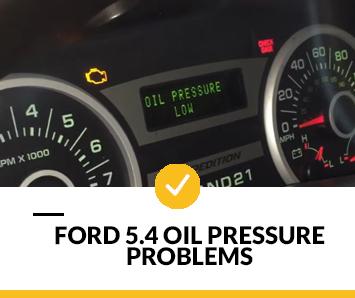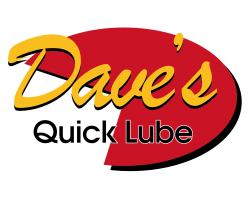Low oil pressure is one of the most common problems that can affect your Ford engine. The engine will seize if the oil pressure is low. When the oil pressure comes on, it’s time to assume the engine is going to lock up. We recommend avoiding running the engine until further notice since a failure to diagnose could lead to serious damage.
The internal combustion engine has a lot of small moving parts. Some of these components come into touch with one another, resulting in friction. Because there is so much activity within the engine, it generates a lot of heat. Oil serves as both the engine’s primary lubricant and the cleaning mechanism for parts. As a result, you’ll want to make sure there is enough oil flowing throughout your engine at all times.
The oil pump ensures that oil is supplied to the engine’s components by generating pressure. Oil flows down the channels until it reaches the bearings. As long as adequate oil pressure is maintained, the rotating shaft will not generate friction or issues. Oil pressure varies depending on the condition of the engine. When accelerating, your car needs greater oil pressure. It’s really that simple.

Importance of Oil Pressure
When your car’s oil pressure is low, the oil pump does not work properly, and the engine will perform poorly. Because engines are complicated machines that have a lot of weight to move, they must be maintained on a regular basis. Oil in an engine maintains the smoothness, operation, and durability of all moving parts.
The pressure that exists as the oil is circulated through an engine rises. It’s this pressure that ensures the oil reaches all of its destinations and continues to flow. When the pressure drops to the point where free-flowing oil no longer surrounds all of the engine’s moving components, non lubricated metal surfaces come into touch.
Heat causes the metal to expand, resulting in friction, warping, seal breaking, and other issues. To put it another way, heating an engine quickly enough can lead to disaster. If left unchecked, problems with oil may really inflict major damage to your vehicle. As a result, it’s critical that you check your oil pressure gauge on a regular basis and do necessary maintenance. If the warning light indicates there is a problem with the pressure and you drive any longer, you risk serious damage to your car.
Here are 5 of the most typical reasons for a lack of oil pressure in your engine.
Causes of Low Oil Pressure
Low oil pressure can be caused by a variety of factors. We’ll go through the most common reasons below: nLow oil levels are one of the most common causes of low oil pressure.
The most common reason for low oil pressure in a F150 is a lack of oil. The first thing you should do is check your engine’s oil level.
Fill the engine oil level if it appears to be low (or empty). Don’t go to the store to buy more engine oil if your automobile’s engine oil level is too low. Running out of engine oil to keep pressure in the crankcase will certainly damage the engine. It’s not a question of whether or not the engine will shut down; it’s a question of when.
-
Bad Oil Pump
Oil is fed to the engine by way of an oil pump, which sucks oil from the oil pan and sends it through the engine. Its ability to pump oil will be reduced as soon as it begins to wear down.
In most oil pumps, a screen prevents large debris from entering. However, because there is usually so much debris in the pump over time, it might eventually cause significant wear and tear on the pump capacity.
-
Air in Oil
If the oil level in the pan is significantly lower than it should be, air may enter the oil pump and aerate the oil. Consider a cappuccino or a beer with foamy head as an analogy. It’s still water, just with different properties when foamy.
When there is too much oil, this same problem may appear. Check the oil level and ensure that it is correct, as well as that it seems normal.
-
Dirty Engine or Dirty Oil
Over time, oil in the crankcase absorbs moisture from the environment. This leads to corrosion that corrodes the bearings and internal components of your engine. Or, rather than being unable or unwilling to change their vehicles sooner because they are running out of money, many drivers delay doing so due to lack of maintenance knowledge
If you don’t know when your truck’s oil was last changed, if you’ve towed a lot, or if your oil change is overdue, changing the oil itself might solve the problem.
-
Pickup Tube
The oil from the pan is sent through a tube to the oil pump in your F150. The pickup tube is what it’s called. This tube can come out, preventing any oil from reaching the oil pump.
-
Clogged Oil Filter
To guarantee that the oil circulates even if the filter gets blocked, modern engines have bypass valves. When there’s too much resistance from the oil filter, the bypass valve switches on. This valve only allows a small amount of oil to pass at any one time, which might cause the engine to spark.
Low Oil Pressure Diagnosis
Here are some of the things you can try to figure out what’s wrong with your oil pressure:
-
Check the oil level.
Checking the oil level in your F150 is, without a doubt, the first step in diagnosing low oil pressure. If the oil level is truly low, you’ll need to top it up until it reaches the full mark again. This might be enough to fix it.
If you don’t clean the oil filter immediately, it will leak out once more. You’ll have to check it more frequently now.
-
Check to see whether the oil pressure sending unit is operational.
An electric oil pressure sending unit is used in modern cars. If your F150’s sensor goes bad, it will give a false low pressure reading to the ECM. When people have the low oil pressure indicator on their dash, one of the first things they do is replace the sensor to see if that solves the problem.
-
Take it to the Mechanic
After the first two stages, it’s best if you leave it to the professionals. Your engine could be destroyed quickly if your oil pressure is too low.
High Oil Pressure
If your Ford 5.4L has abnormally high oil pressure, you must figure out what’s causing it right away.
Oil pressure that is unusually high might indicate more significant issues, such as a clogged oil passage or a failed pressure relief valve. It should be treated the same way you would have no oil pressure until you find out what’s wrong with your F150’s engine.
High Oil Pressure Causes
The following are some of the most frequent causes of high oil pressure. Many of them do not require the engine to be opened. They are listed in order to prevent you from having to address them if it does come down to it.
1. Cold Start
When you first start your car, the oil pressure is usually greater. The oil is thicker and the pressure will stay higher until the engine warms up and it thins out a bit.
The oil pressure should be typically in the range of 65 to 75 pounds at startup for most cars. As the engine warms up, it will decrease to around 40 pounds. That’s when there is a serious issue if the oil pressure stays high.
-
Faulty Oil Pressure Sending Unit
The pressure in the oil must be correct. If it isn’t, there is a good chance that an engine seizure could happen when you drive at high speeds on the highway with low fuel levels. This can also occur when driving slowly around town if your truck’s oil system is clogged or damaged by carbon deposits from a previous accident or road damage. The most likely cause of this problem is because your oil pressure sending unit has gone bad.
A high pressure reading might be caused by a faulty sending unit. That’s excellent news since they are simple to reach and inexpensive to replace, with nothing seriously wrong with your engine.
You’ll need a manual oil pressure test gauge, which you’ll connect into the port where the regular oil pressure sending unit is located. You may get an actual reading of your Ford’s oil pressure by doing this. If it matches what the electronic oil pressure sending unit indicates, you can proceed with your diagnosis.
If the tester reads normal, it’s a sign that there is an issue with the transmission. Examine the wiring carefully to look for cracks or damage. Make sure the connections are tight and that the contacts aren’t corroded. If everything appears to be in order, replacing the sensor should resolve the problem.
-
Bad/Dirty Oil Filter
If your car’s oil filter is clogged with dirt, it will no longer let adequate oil flow through the engine. When this happens, the temperatures will rise, and the oil pressure may also rise.
When you have high oil pressure, replacing the oil and filter is a fantastic idea. It only takes a few minutes, and if the filter was clogged, you’ve fixed the problem.
-
Bad Oil or Wrong Viscosity Oil
If you use the incorrect oil weight in your engine, it might have too much pressure. This is an intriguing rabbit hole to go down if you didn’t do this procedure yourself physically. We’re all imperfect. Perhaps the firm that changed your Ford’s oil used the wrong sort of oil.
-
Internal Engine Issues
We’ve prepared a list of some of the most prevalent reasons for high engine oil pressure that don’t include opening up the engine. If you’ve gone through everything and still can’t figure out what’s wrong, it’s time to look at mechanical issues or hire a mechanic to take a look.
What is an Oil Viscosity
When talking about oil and how automobile engines function, it’s critical to grasp what viscosity implies and how it affects semi-truck engine oil pressure.
The viscosity of a liquid is defined as the resistance it presents to flow, measured in units called poise. It’s a method of measuring force divided by area rather than flow.
Oil’s viscosity, in simple terms and referring to engine oil specifically, controls how freely the oil may flow around the engine and lubricate it. This implies having the appropriate viscosity is critical for an engine to function effectively. It’s also worth noting that engines can operate at temperatures ranging from 195-200 degrees Fahrenheit.
Oil for these conditions must be able to function well at low temperatures as well as the engine’s maximum operating temperature.
You’ll find a variety of oil types on automobile service shop shelves, all with varying viscosity ratings. It’s critical that you determine which oil is appropriate for your car and only use the specified grade of oil.
How does the oil pump work?
Oil pans are used on most automobile engines. The engine oil is generally kept in the oil pan on typical automobiles, while it is typically kept in an external reservoir on high-performance cars. The oil pump is responsible for forcing extra oil into the engine at a faster rate than it can be utilized. As a consequence of this drive, there is always pressure. Oil channels are made of flexible silicone that directs oil to specific locations where it is required. Oil serves more as a barrier than as a lubricant since it prevents metal contact between internal engine components. When the barrier deteriorates, there is an increase in metal contact relative to the rate of oil pressure loss. Without oil pressure, the barrier that the oil builds is weakened or completely destroyed. Oil pressure drives oil into tight spaces as quickly as possible. When the oil pump fails, engine parts will run out of oil and damage will occur as a result.



